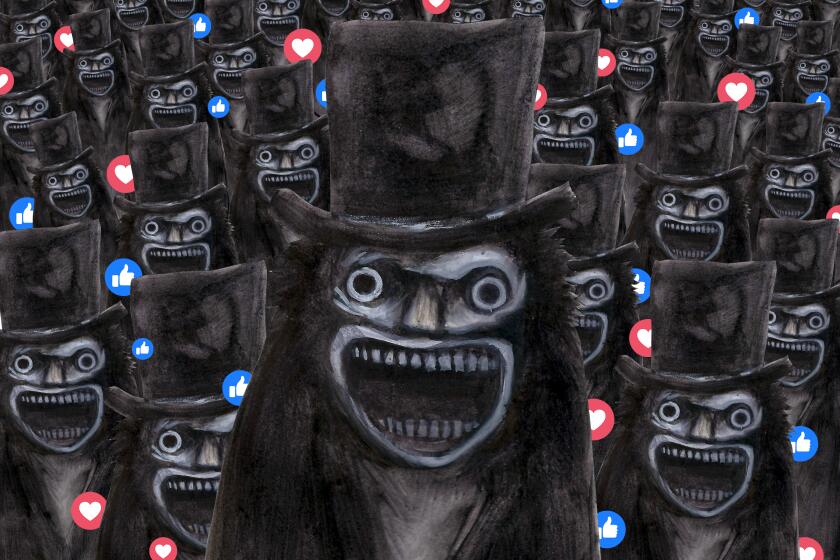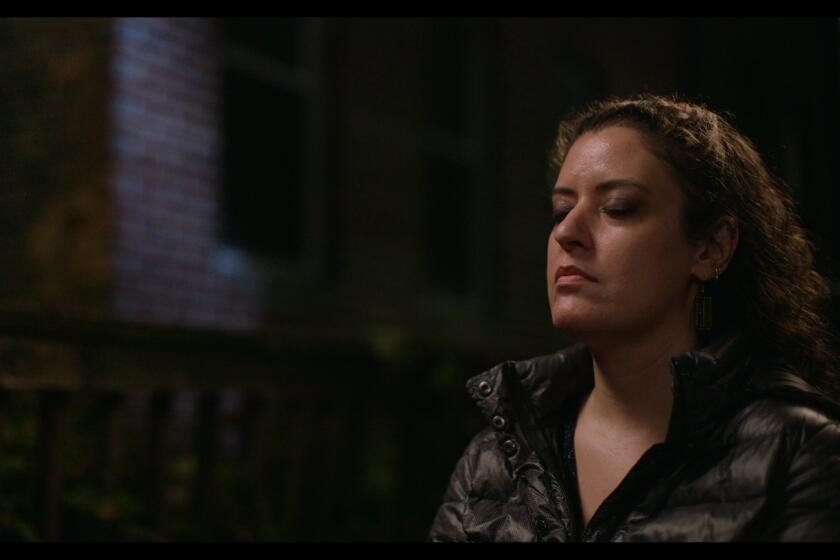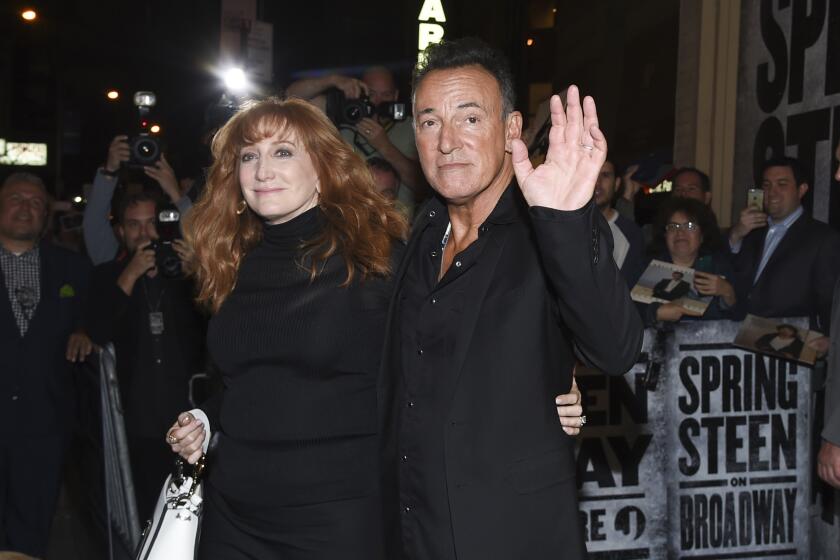‘Peepli Live’ explores a troubled India rarely seen by outsiders
If the Oscar-winning “Slumdog Millionaire” was a Western outsider’s cheery fantasia of modern India, “Peepli Live” can be seen as its funhouse-mirror opposite: an insider’s satiric comedy-drama about a troubled India rarely glimpsed by foreign tourists.
“Slumdog” presented an urban rags-to-riches fairy tale about a quick-witted young man who scores big on a TV game show, beats the bad guys and gets the girl. By contrast, “Peepli Live” conjures a rural morality tale about a noble but none-too-bright young farmer named Natha who nearly loses everything, including his life, because of some of the same forces (globalization, corruption, easy money) that propel “Slumdog’s” hero to fame and fortune.
Yet in its alternately touching and deadpan-comic way, “Peepli Live” is a funnier film than “Slumdog” and scarcely less exhilarating than British director Danny Boyle’s 2008 movie, which won eight Academy Awards, including best picture. Well received by audiences at last winter’s Sundance Film Festival, “Peepli Live,” a decidedly non-Bollywood production but with a Bollywood-style willingness to please, opens in theaters Friday.
“It’s the kind of film where you’re laughing and wondering, ‘Should I be laughing?’” said Anusha Rizvi, who wrote “Peepli Live,” her first feature film, and co-directed it with her historian husband, Mahmood Farooqui. She was speaking by Skype from New Delhi, the Indian capital, where she lives and has built her career as an independent documentary filmmaker and former television producer at NDTV, India’s preeminent news channel.
Befitting Rizvi’s journalistic background, “Peepli Live” was inspired by real-life contemporary events: the economic shakeup of India’s agrarian society and a horrifying wave of suicides by poor Indian farmers. According to government statistics cited in the film, 182,000 farmers took their own lives between 1997 and 2007. Additionally, between 1991 and 2001, 8 million Indians quit farming altogether.
“It’s alarming. And it’s something that took a while for the government to take notice of,” said Aamir Khan, the superstar Indian actor who produced “Peepli Live” with Kiran Rao, during an L.A. stopover last week to promote the film.
Although it’s unclear how many farmers’ deaths can be directly linked to financial hardship, few would dispute that India’s rural laborers are struggling. In recent decades, as the country’s economy has boomed, more of the nation’s populace has migrated to sprawling mega-cities such as Mumbai searching for jobs. The remaining agrarian masses, who still constitute the country’s majority, increasingly must compete against international agribusiness and Western government-subsidized farm interests.
“So what good is farming?” one character rants in the opening minutes of “Peepli Live.” “American seeds, American fertilizers. Pay for it, then pray for rain!”
The bizarre reality on which the film’s plot turns is that the Indian government makes compensatory payments to suicidal farmers’ surviving family members. In the film, Natha (played by Omkar Das Manikpuri) and his marginally savvier brother Budhia (Raghubir Yadav) are despairing of losing their land over an unpaid government loan. So they hatch a hare-brained scheme to cash in by having Natha kill himself.
Rizvi, whose own extended family has deep rural roots, said it was the government’s peculiar policy that fired her imagination to write the film. “We have compensation for the dead,” she said, “but what about the living?”
When word of Natha’s plan leaks out to the voracious news media, the chronicle of his death foretold becomes an overnight cause célèbre and a political hot potato for the local power brokers on the eve of national elections. Among the many colorful secondary characters spun off from this scenario are an ambitious television reporter (Malaika Shenoy), a calculating chief minister (Yugal Kishore), Natha’s cranky spouse (Shalini Vatsa) and the brothers’ splenetic invalid mother, played by Farrukh Jaffer like one of Samuel Beckett’s existential cranks dropped into the middle of Madhya Pradesh, the central Indian state where “Peepli Live” was filmed.
Whereas “Slumdog Millionaire” throbbed to the celebratory tempos of A.R. Rahman’s disco ragas, “Peepli Live” is set to traditional folk tunes that suggest a wry, wary rejoinder to the relentlessly upbeat global chorus hailing India’s 21st century economic “miracle.” However popular it proves to be with audiences, “Peepli Live” is unlikely to be dubbed “the feel-good film of the decade,” as the News of the World called “Slumdog.”
Even though the movie takes a number of well-aimed sardonic swipes, it never feels bombastic or preachy. And it stays emotionally grounded by keeping its focus on its nonplussed but good-hearted protagonist.
“I’m a little hesitant in calling it a satire because there is a very strong emotional thread to the film,” said Rizvi. “I like the theater that comes out of reality, the drama that comes out of reality.”
To achieve that verisimilitude, Rizvi and her husband, who also served as casting director, stocked the film with a number of rural folk actors from the illustrious Naya Theatre repertory company, run by legendary director Habib Tanvir. Many performers, previously little-known outside regional theater circles, are making their feature film debuts with “Peepli Live.”
Although 600 actors were auditioned across several Indian states, Rizvi said it’s not hard to find gifted performers in a country so steeped in everyday drama.
“India has so many characters that for a writer it’s such amazingly rich material,” she said. “We have so many languages, God knows how many religions, and so many castes, sub-castes and sub-sub-castes. I think this country’s full of actors. I had to just go looking and there they were.”
Even so, getting the film made required overcoming several major obstacles over six years. Rizvi said that she and her husband had virtually no contacts inside Bombay’s massive, labyrinthine Hindi-language film industry when they arrived from their New Delhi home to start shopping around the screenplay.
Gradually through word of mouth they began meeting people within the clubby industry. Rizvi also began writing to potential producing partners, and Khan was the first to respond. “It helps a great deal to have a superstar who is also a producer,” Rizvi said.
Ranked No. 1 in Filmfare’s 2008 list of Bollywood’s most powerful people, Khan owns a production company and has starred in some of India’s biggest domestic and foreign box-office hits. Among them are the 2001 period piece “Lagaan: Once Upon a Time in India,” about an epic cricket match during the Raj epoch, and the Vidhu Vinod Chopra-penned “3 Idiots,” released internationally last year.
Because he was filming “3 Idiots” at the same time that “Peepli Live” was shooting, Khan said, he wasn’t able to visit the latter film’s set often. But when he got a message asking him to come see the crew and cast, he said, “I did step in for a day, and it was great fun.”
“There were no really big stars, a lot of the actors are villagers themselves, and a lot of them are tribals,” Khan said. “So they kind of gelled in quite well. A lot of them spoke the same dialect and all of that.”
The main concern that “Peepli Live” highlights, Khan said, is “the growing divide between rural and urban India,” a problem that remains largely invisible to most city dwellers. But that could be changing, he believes, as could the traditionally hard-and-fast-divide between Bollywood’s exuberantly overstuffed musical melodramas and high-minded art-house fare.
Movies such as “Peepli Live” and “Lagaan” — thoughtful, nuanced films that nonetheless use some mainstream strategies to attract wider audiences — recall an earlier era of Indian filmmaking led by directors such as Mehboob Khan and Bimal Roy, he said.
“There’s no cynicism. There’s a lot of hope, there’s a lot of color, there’s a lot of vibrancy,” Khan said. “It’s a great emotional journey that you go on. And it’s kind of like Hollywood was in the ‘50s and ‘60s, if you know what I mean.”
reed.johnson@latimes.com
More to Read
Only good movies
Get the Indie Focus newsletter, Mark Olsen's weekly guide to the world of cinema.
You may occasionally receive promotional content from the Los Angeles Times.









